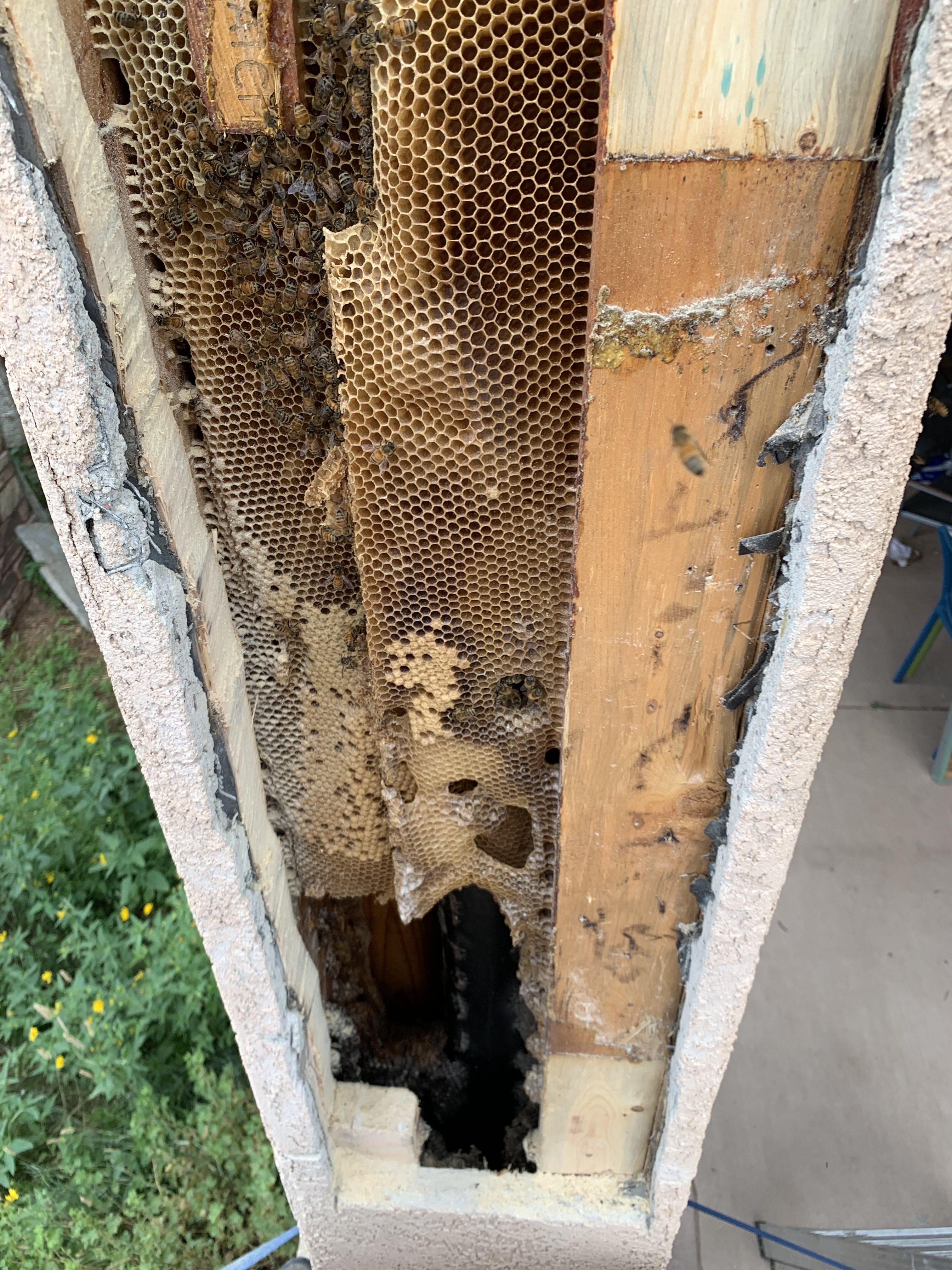
The homeowners of this colony found out why pesticiding a honey bee colony is really a bad idea, short term solution, and they were not even the ones who did it. Their new neighbors told them how the previous owners had a colony of honey bees in their deck pillar that they hired someone to pesticide. Several years later, a new swarm moved into the same pillar like it never happen. Why do you ask? Wouldn’t the new honey bee swarm “sense” that the wax could be poisonous to them? I believe there are several reasons why swarms move in on pesticided colonies. First, over time pesticides dissipates, but the smell of wax, propolis, and honey does not. Second, whoever pesticided this colony didn’t even seal the surrounding areas they were using to enter/exit. This can be problematic due to other bees robbing the pesticided honey from the now dead/dying colony and bringing it back to there colony. As well as, exactly what happened in this case. The pillar will always be an attractant to a new honey bee swarm moving in if a crack or crevice is created over time (in this case it was never sealed afterwards). Another reason it is essential to fill the cavity after removing and relocating a colony.
The swarm that moved into this old bee house actually utilized very little of the old pesticided comb. In several of the pictures you can still see pesticided comb sections and dead bees on them (bottom of pillar). Instead, they built new comb above it, and continued up the deck pillar instead of down. I am amazed how it appears they somehow built out there comb horizontally off the sidewalls of framing and plywood. Typically, once a swarm moves into a pillar, they start there colony at the top of it and build down vertically off of the plywood top. I am not sure how the old comb influenced there decision making, but they did not start at the top.

